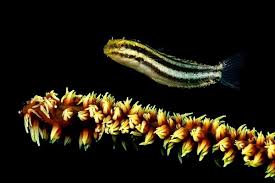The Role of the Dragon in Modern Chinese Literature

The dragon, an ancient symbol of power, wisdom, and divine protection, has had a significant presence in Chinese culture for thousands of years. While dragons are deeply embedded in traditional Chinese mythology, their influence extends into modern Chinese literature, where they continue to play an essential role in shaping the narratives, characters, and themes. In this article, we explore the evolving role of the dragon in modern Chinese literature, examining its representation in contemporary works and its symbolic significance in the context of China’s socio-political changes.
1. The Dragon as a Symbol of National Identity
In modern Chinese literature, the dragon often serves as a symbol of national identity and cultural pride. Following the end of imperial China and the rise of the Republic of China in the early 20th century, the country underwent a series of drastic transformations, including political revolutions, social upheaval, and the establishment of the People’s Republic of China in 1949. During this tumultuous period, the dragon, once a symbol of imperial authority, began to take on new meanings within literary works, particularly as a symbol of China’s strength, resilience, and unity.
One of the most prominent examples of the dragon as a symbol of national pride can be seen in Mo Yan’s “Big Breasts and Wide Hips” (1995). This work, which won the Nobel Prize in Literature in 2012, features references to the dragon in the context of China’s tumultuous history. Mo Yan, often regarded as one of the most important contemporary Chinese authors, uses the dragon as a metaphor for the complex relationship between China’s past and its present. The dragon becomes a symbol of survival and strength, representing the nation’s ability to endure through periods of oppression, war, and political instability.
In this sense, the dragon in modern Chinese literature is not merely a mythical creature but an enduring symbol of the Chinese people’s struggle for autonomy, dignity, and self-determination. The dragon’s imagery invokes a sense of collective identity and pride, serving as a reminder of China’s ancient cultural heritage and its ability to face challenges head-on.
2. The Dragon and Mythical Reinterpretations in Modern Literature
While traditional depictions of the dragon in Chinese culture are often associated with imperial authority, luck, and fertility, modern Chinese literature has reinterpreted these associations to reflect more complex themes, including the tension between tradition and modernity. In the works of contemporary Chinese authors, the dragon is frequently used as a tool to explore the changing social landscape and the individual’s place within it.
One notable example is “The Three-Body Problem” by Liu Cixin, a science fiction novel that won the Hugo Award for Best Novel in 2015. In this work, the dragon is used as a metaphor to explore themes of power, knowledge, and the boundaries of human existence. The novel draws on both traditional Chinese mythology and speculative science fiction, creating a unique blend of genres. The dragon, in this context, is not just a symbol of traditional Chinese culture but also represents the unknown and the infinite possibilities of the universe.
Liu Cixin’s use of the dragon in “The Three-Body Problem” reflects a growing trend in modern Chinese literature, where the creature is not limited to its traditional mythological role but is instead employed as a symbol of deeper, more abstract concepts. The dragon’s power and mystery make it an ideal vehicle for exploring themes of technology, alien civilizations, and the future of humanity, illustrating how contemporary Chinese authors are able to blend the old with the new, creating fresh interpretations of ancient symbols.
3. The Dragon in Political and Social Commentary
Modern Chinese authors often use the dragon as a means of commenting on the nation’s political and social issues. In this sense, the dragon’s role in literature has expanded from a symbol of divine protection to a symbol of power and control. Many contemporary writers use the dragon to critique authoritarianism, social inequality, and the challenges of modernization, offering a critical perspective on the nation’s leadership and the effects of rapid industrialization.
For instance, Yu Hua’s “To Live” (1993) is a novel that explores the lives of ordinary Chinese people during the tumultuous years of the Chinese Revolution and the Cultural Revolution. The story follows the life of a man named Fugui, who, despite experiencing immense hardship and loss, remains resilient. Throughout the novel, there are subtle references to the dragon as a symbol of power and authority, particularly in the context of the government’s control over the people. The dragon, in this case, represents the government’s oppressive power, which is both awe-inspiring and terrifying.
In “Chronicle of a Blood Merchant” (1995), another work by Yu Hua, the dragon is again used to symbolize the disparity between the ruling class and the common people. The protagonist, Xu Sanguan, sells his blood to support his family, but throughout the story, he is haunted by the idea that his efforts are futile in the face of an uncaring system. The dragon, in this case, can be seen as a symbol of the powerful forces that shape the lives of ordinary citizens, forces that are both omnipresent and indifferent to the suffering of the individual.
These works use the dragon to address the challenges of living under a political regime where power is centralized, and the people are often at the mercy of those in control. The dragon in this context represents both the strength and the tyranny of the state, forcing readers to confront the complexities of power, corruption, and societal change.
4. The Dragon and the Exploration of Human Nature
While the dragon in modern Chinese literature is often associated with political power and social change, it also serves as a vehicle for exploring more universal themes, particularly the complexity of human nature. In many contemporary works, the dragon is portrayed as a symbol of both creation and destruction, representing the duality of human existence and the tensions between good and evil.
In “Red Sorghum” (1986), Mo Yan once again uses the dragon as a symbol of human strength and frailty. The novel, which follows the lives of a family living in rural China during the early 20th century, is filled with vivid depictions of both love and violence. The dragon, in this context, represents the primal forces of nature that shape human lives and the fierce struggle for survival in a harsh world.
The character of the dragon in “Red Sorghum” is complex: it is both a force of creation, bringing life to the people and the land, and a force of destruction, as the dragon’s fire consumes those who dare to challenge its power. Through this duality, Mo Yan explores the ways in which individuals navigate their relationships with society, the land, and the forces of fate. The dragon in this work is not merely a mythological creature but a reflection of the inner turmoil and contradictions that define the human experience.
5. The Dragon and the Intersection of Tradition and Modernity
One of the most compelling aspects of the dragon’s role in modern Chinese literature is its ability to bridge the gap between tradition and modernity. While the dragon is firmly rooted in Chinese mythology, its representation in contemporary literature reflects the changing values, beliefs, and identities of modern Chinese society.
In the works of authors like Jin Yong, whose martial arts novels are some of the most popular in modern Chinese literature, the dragon is often used as a symbol of both cultural heritage and individual empowerment. In Jin Yong’s novels, the dragon represents the ancient wisdom and martial arts traditions that have been passed down through generations, but it also serves as a symbol of the individual’s ability to transcend their limitations and achieve greatness.
Jin Yong’s “The Legend of the Condor Heroes” (1957) is one example of this blending of traditional and modern themes. In this epic tale of adventure and heroism, the dragon is a symbol of the protagonist’s journey to discover his inner strength and embrace his destiny. At the same time, the dragon also represents the continuity of Chinese culture and the enduring power of traditional values in an increasingly modern world.
6. Conclusion: The Enduring Power of the Dragon in Modern Chinese Literature
The dragon continues to be a powerful and versatile symbol in modern Chinese literature, where it serves as both a representation of China’s cultural heritage and a tool for exploring contemporary issues. From its association with national identity and political power to its use in exploring the complexities of human nature, the dragon remains an enduring and multifaceted figure in the works of contemporary Chinese authors.
As China continues to evolve, so too does the role of the dragon in its literature. The creature has transcended its traditional mythological roots and become a symbol of both personal and collective transformation, offering insight into the complexities of power, identity, and society. Whether it is portrayed as a force of creation or destruction, a symbol of divine protection or political control, the dragon remains a potent and timeless figure in the world of modern Chinese literature.

